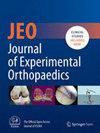Derotational osteotomy is a relevant procedure in the management of lateral patellar dislocation: An expert survey of the International Patellofemoral Study Group
Abstract
Purpose
To evaluate current knowledge and discover potential controversies in treating torsional deformities of the lower limb in patients with lateral patellar dislocation (LPD) among patellofemoral experts.
Methods
An online survey was distributed to all active International Patellofemoral Study Group (IPSG) members, representing an international sample of orthopaedic surgeons with a specific interest and experience in patellofemoral joint disorders. The survey included 21 single- and multiple-choice questions and was distributed by email between 2022 and 2023.
Results
Thirty-five members (54%) completed the questionnaire. The responding experts conduct a hip–knee–ankle magnetic resonance imaging or computed tomography following first-time and recurrent patellar dislocation based on clinical examination (43% and 49%, respectively), routinely (6% and 23%, respectively), or not at all (51% and 29%, respectively). Two thirds of the experts perform derotational osteotomies of the femur, and 37% perform derotational osteotomies of the tibia. Most of these surgeons (61% and 69%, respectively) perform less than five derotational osteotomies of the femur or tibia per year. The most important factors for performing derotational osteotomy are abnormal torsion (100%), abnormal gait pattern (57%), revision cases (74%) and recurrent patellar instability (61%). Most surgeons (65%) agree on a cut-off value of >30° of femoral ante-torsion and >35° of external tibial torsion to perform derotational osteotomy, but the preferred measurement techniques vary.
Conclusion
Torsional deformities of the lower limb are a clinically relevant topic in the management of patients with recurrent LPD. Although the caseload is low, most experts perform derotational osteotomies. Diagnostic and therapeutic algorithms overlap widely between surgeons, but the indication and cut-off values for performing derotational osteotomy must be further established.
Study Design
Survey.
Level of Evidence
Level V.


 求助内容:
求助内容: 应助结果提醒方式:
应助结果提醒方式:


